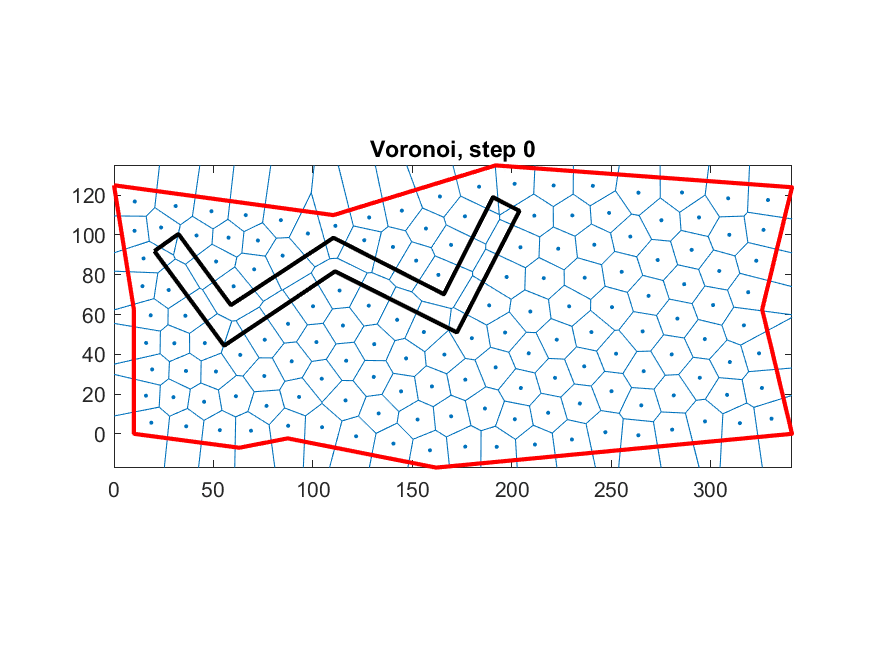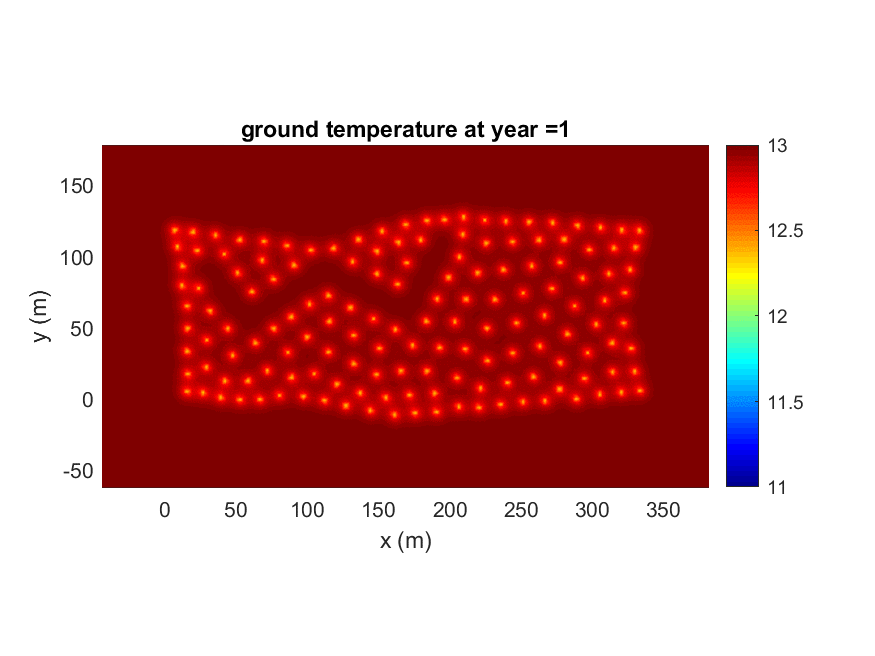
Research Projects
On-Going:
1. Title: “Cost-effective thermally activated building systems to support a power grid system with high penetrations of as-available renewable energy resources.” Sponsor: Department of Energy (DOE), EERE, Building Technology Office (BTO)
Role: co-PI (Lead at UTK) with J. Wang (PI, UA), Z. O’Neil (TAMU), S. Shrestha (ORNL), X. Liu (ORNL)
Project Total: $1.5M, UTK share $300k Project Duration: Aug 1st, 2019 – July 31st, 2022. (On-going)
2. Title: “Self-adaptive Building Façade Enabled via Pressure-regulated Metamaterials and Reinforcement Learning Control.” (Grant # CMMI – 1663302, # CMMI-1954517) Sponsor: National Science Foundation (NSF) SAEM Program (currently ECI)
Role: Principle Investigator (PI) with co-PI Farbod Fahimi
Duration and Amount: June 1st, 2017 – May 31st, 2021. $365k (On-going)
https://www.nsf.gov/awardsearch/showAward?AWD_ID=1954517
3. Title: "Utilizing Coal-Derived Solid Carbon Materials Towards Next-Generation Smart and Multifunction Pavements." Sponsor:
Department of Energy (DOE), FE Role: PI with Prof. Baoshan Huang (UTK)
Project Total: $537k ($430 federal share + $107.5 cost-share)
Duration: Jan 1st, 2021 – June 30th, 2022. (On-going)
4. Title: “Enabling Cross-industry reuse of comingled waste plastics as quality asphalt modifier for sustainable pavement.”
Sponsor: Department of Energy (DOE) - REMADE Institute
Role: co-PI with B. Huang (PI, UTK), Q. He (UTK), P. Cao (ORNL), G. Baugardner (Ergon)
Amount: $925k+$925k cost share ($1.85M total), H. Zhou share: $370k. Selected for funding: https://remadeinstitute.org/projects





Completed:
3. Title: “Virtual Industrial Control Systems for Cybersecurity Engineering Education.” (Grant # DGE-1623657)
Sponsor: NSF Division of Graduate Education (DGE)
Role: Co-PI (25% share) with T. Morris (PI), F. Fahimi (co-PI), R. Gaede (co-PI), and K. Chittur (co-PI).
Duration and Amount: Sep. 2016 - Dec. 2020, H. Zhou share: $125k out of $500k (Completed)
4. Title: “Urgent mitigation to major hurricane surge and wave force damage in the I-10 Mobile bay” (Grant # ALDOT 930-935)
Sponsor: Alabama Department of Transportation (ALDOT) through University of Alabama at Birmingham
Role: Co-PI subcontract from UAB (25%) with T. Attard (PI)
Duration and Amount: Oct. 2016 - Mar. 2018. $64k out of $279k (Completed)
5. Title: “Stability of Horizontally Curved I-Girder Bridges during Early-Stage Construction.” (ALDOT 930-903)
Sponsor: ALDOT/ FHWA
Role: Sole-PI (100%)
Duration: May. 2015 – May 2018, $182k. (Completed)
6. Title: “Construction Locked-in Force due to Different Cross-Frame Detailings - Phase I: Field Evaluation.” (Grant # ALDOT 930-926)
Sponsor: ALDOT/ FHWA
Role: Sole-PI (100%)
Duration: Dec. 2015 – Feb. 2017, $88,751. (Completed)
7. Title: “Self-centering Connection for Traffic Sign Structures.” (Grant # ALDOT 930-912)
Sponsor: ALDOT/ FHWA
Role: Sole-PI (100%)
Duration: Jan. 2016 – April 2017, $138k (Completed)
Travel Grant:
Sponsor: NSF through Texas A&M University for attending the 2018 RILEM Digital Concrete conference hosted by ETH-Zurich, Switzerland Awarded amount: $2,000

Biophysical Heat Regulation Strategies as Inspirations for Building Design
Efficient heat regulation solutions for buildings can be extracted from strategies found in nature. Through millions of years of evolution, living organisms have developed time-tested morphological and behavioral adaptations to complement physiological strategies for thermoregulation. Some intriguing pinnacles include the passive cooling behavior of African elephant's skin: https://www.youtube.com/watch?v=cqIQ-LS-DmM and a variety of arid animals/ plants.
Inspired by the extraordinary passive cooling behavior of desert lizards (e.g., Moloch horridus) and African elephants’ skin structures, this research studies fundamental physical and physiological processes governing the cooling behavior of these animal skins. The objectives are to: (i) Establish a biophysical framework to understand the morphological and material adaptations found in arid area animals for passive water collection and cooling; (ii) Develop synthetic routes for bioinspired building materials and adaptive topological design methods for environmentally-adaptative building envelopes; and (iii) Study the scale-up potential for building applications.
Collaborators: Zoo Knoxville (Phil Colclough and Sheela Hira)


Publications:
[1] Brooks, A. L., Shen, Z., & Zhou, H. (2020). Development of a high-temperature inorganic synthetic foam with recycled fly-ash cenospheres for thermal insulation brick manufacturing. Journal of Cleaner Production, 246. doi:10.1016/j.jclepro.2019.118748
[2] Y He, AL Brooks, Z Shen, and H Zhou*. Towards building homeostasis through a durable biomimetic synthetic foam for building surface cooling. Energy & Buildings, (under review, manuscript can be viewed here).

Dynamic and Environmentally Adaptive Building Envelope
The static nature of current envelope design and operation is diametric to the mutable and transient forces and energies acting on our building stocks. Substantial energy saving potential resides in more pervasive solutions that transcend the envelope’s role from a passive barrier to a responsive functional assembly attuned to energy optimizations. Inspired by the physiological responses of biological systems to changing environments, this project investigates a novel approach to autonomously tune building envelope’s thermophysical and mechanical properties during building operation.
The objective of this project is to study the interaction between fluids and deformable mesoporous structures (i.e., in analogy to the hydration/dehydration of skin cells) and its possible utilization in self-adapting building envelopes. The underlying hypothesis is that building energy and structural efficiencies can be synergistically improved by allowing the envelope system to dynamically interact with the changing environments. Three interrelated thrusts of effort are pursued, where: (i) a computational framework will be established to design and optimize building envelope with controllable thermal-mechanical properties; (ii) an control strategy will be formulated based on Reinforcement Learning (RL) method for autonomous envelope performance regulation and self-adaptation; and lastly (iii) full-scale component validation tests and case studies will carried out to quantify the energy saving potential.
Funding Source: National Science Foundation (NSF) CMMI-1663302 (transferred to UTK through CMMI-1954517) Student (GRA): Yawen He, PhD student
Collaborator: Prof. Farbod Fahimi, University of Alabama in Huntsville
Publications:
[1] Z Shen, AL Brooks, Y He, S Shrestha, and H Zhou* (2021). Evaluating dynamic thermal performance of building envelope components using small-scale calibrated hot box tests. Energy & Buildings (251), 111342.

Thermally Activated Building Systems and Adaptive Materials to Support Grid-Interactive Efficient Buildings
This project will develop and demonstrate a novel thermally activated building envelope system that integrates Phase Change Material (PCM)-based Thermal Energy Storage (TES) and the hydronic activation into the building envelope, with a goal to reduce the energy cost for building operation as well as to support renewable energy sources (RES) for the power grid reliability, quality, resilience, and dispatchability. Specifically, a new low-cost and fire-retardant PCM packaging technology (i.e., CenoPCM) will be developed for high-volume building applications. In addition, hydronic capillary loops will be embedded into the CenoPCM building envelope as a heat transfer mechanism to make the thermal energy storage capacity of the PCM accessible to RES.
This project fundamentally transforms the current building envelope system and associated control through the following innovations: Material Innovation (micro-encapsulation of low-cost PCM using cenospheres): a novel technique to integrate PCMs into construction materials (concrete) through encapsulating PCMs into low-cost, fire-retardant, and highly thermal-conductive hollow fly ash particles. Its cost is just one third of the existing PCM microcapsules. Subsystem Innovation (Integration of CenoPCM with hydronic heating/cooling): an innovative thermal active panel with capillary tubes, which functions as thermal energy storage unit using heat sink and source from solar-thermal collector and ground loop heat exchanger. System-level Innovation (Supporting power grid systems with high penetrations of as-available reviewable energy resources): a novel integration of the envelope panel with PCM and capillary network to support a power grid system with high penetrations of as-available RESs (e.g., solar and wind).
Funding Source: Department of Energy (DOE) EERE BENEFIT program (DE-EE-0008677)
Student (GRA): Adam Brooks, PhD student; Zhenglai Shen, Post-doc Assoc.
Collaborators: Prof. J. Wang (University of Alabama), Prof. Z. O'Neil (TAMU), Dr. S. Shrestha (ORNL), Dr. X. Liu (ORNL), Dr. Rusty Sutterlin (Sutterlin Technologies LLC.)
Publications:
[1] Shen, Z., & Zhou, H. (2020). Predicting effective thermal and elastic properties of cementitious composites containing polydispersed hollow and core-shell micro-particles. Cement and Concrete Composites, 105. doi:10.1016/j.cemconcomp.2019.103439
[2] Zhou, H., & Brooks, A. L. (2019). Thermal and mechanical properties of structural lightweight concrete containing lightweight aggregates and fly-ash cenospheres. Construction and Building Materials, 198, 512-526. doi:10.1016/j.conbuildmat.2018.11.074
[3] Brooks, A. L., Zhou, H., & Hanna, D. (2018). Comparative study of the mechanical and thermal properties of lightweight cementitious composites. Construction and Building Materials, 159, 316-328. doi:10.1016/j.conbuildmat.2017.10.102

People-Energy-Building Convergence in Resilience and Energy Efficient Communities
The overarching hypothesis for this project is that energy-efficiency improvements for buildings and communities can be integrated in resilience planning to better capitalize the post-disaster window of opportunity for improving hazard resilience while achieving energy efficiency and sustainability goals.
This research addresses two critical barriers that have previously limited research on linkages between energy efficiency and hazard resilience in community planning and post-disaster recovery decision-making: 1) lack of methodology/ metrics to comprehensively describe hazard resilience, energy efficiency, and their interdependency at individual building and community levels; and 2) lack of human-needs driven integration of engineering solutions and sociological considerations to effectively mitigate impacts from natural hazards.
Main personnel: Zhenglai Shen (post doc research assoc,)
Collaborators: Prof. Chien-fei Chen, Prof. Kevin Tomsovic - UTK CURENT center; and Prof. Yue Li - Case Wester Reserve University
Publications:
[1] Z Shen, H Zhou, and S Shrestha (2020). LCC-based framework for building envelope and structure co-design considering energy efficiency and natural hazard performance. Journal of Building Engineering,102061. https://doi.org/10.1016/j.jobe.2020.102061
[2] E Asadi, Z Shen, H Zhou, A Salman, Y Li. (2020). Risk-informed multi-criteria decision framework for resilience, sustainability and energy analysis of reinforced concrete buildings. Journal of Building Performance Simulation, 13(6), 804-823. doi:10.1080/19401493.2020.1824016
[3] Z Shen (2019). Life-cycle consideration in risk-informed decisions for energy-efficient building design under various hazard exposures and climate conditions. PhD Dissertation, University of Alabama in Huntsville.



Bioinspired Designs for Energy Efficient Building and Geothermal Applications
Widespread adoption of GHPs together with the RE expansion will significantly reduce GHG emissions from buildings, lowering HVAC operational costs dramatically and raising the resilience of the grid along the way. However, the application of GHP is hindered by the high initial cost of installing borehole heat exchangers (BHEs). A promising solution to overcome the high initial cost barrier is to integrate BHEs with thermal energy storage (TES).
This project applies a bioinspired computational algorithm - i.e., adaptive centroidal Voronoi tessellation to design and optimize BHE fields on complex terrains.
Main personnel: Zhenglai Shen (post doc research assoc,)
Collaborator: Dr. Xiaobing Liu (ORNL)

Coal-Derived Materials for Next-Gen Smart Pavement
This research demonstrates the use of coke-like coal-char, a key byproduct of the coal pyrolysis process, in the design and scale-up construction of a multifunctional pavement system that transforms roadways into multifunctional elements capable of self-sensing, self-heating (deicing), and self-healing. During winter, the electric conductive nature of the percolated coal-char aggregate network can be utilized for Ohmic heating for road surface deicing; whereas when temperature is above freezing, the dielectric behavior arise from the carbon-bitumen microstructure can be leveraged for self-sensing.
This new strategy would provide a promising pathway to rethink the use of the U.S. domestic coal resources by utilizing the low-cost, prominent durability, mechanical strength (very high strength-to-weight ratio), and physicochemical properties (electrical and thermal conductivity) of coal-derived solid carbon materials to produce mass produced components for infrastructural applications. It brings vast environmental and economic benefits to promote the beneficial integration of domestic coal resources in the value chain of bridge and road construction.
Funding Source: Department of Energy (DOE) Fossil Energy Office (DOE Award DE-FE0031983)
Main personnel: Adam Brooks (PhD Student)
Collaborator: Prof. Baoshang Huang (UTK)

